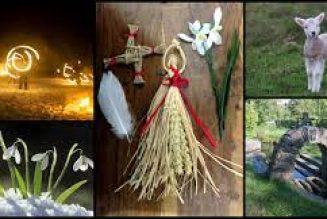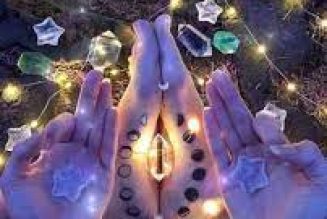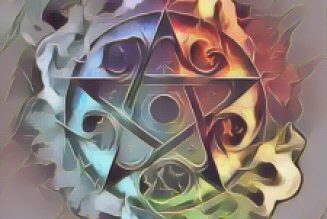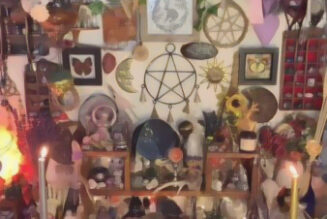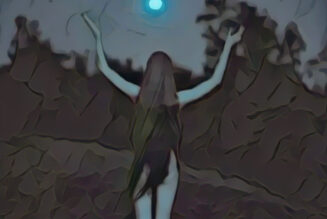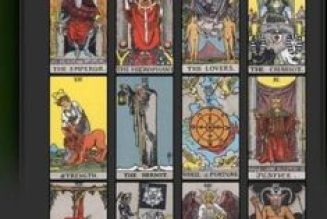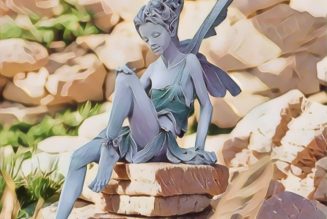In the scenic valleys of North Cornwall lies the charming village of Boscastle, a place that draws visitors all year round. Boscastle is best known for the Museum of Witchcraft and Magic, which was founded by Cecil Williamson. Over the years, the museum has been owned by several notable practitioners and authors, including Graham King and now Simon Costin. Each has contributed to the museum’s impressive collection of knowledge and artifacts.
Boscastle is unique, with the River Valency flowing through the village and meeting the Celtic Sea. Once a busy trading harbor, it is now a peaceful holiday spot, perfect for those seeking relaxation and a touch of history. The village’s natural beauty and historical background make it an ideal destination for both rest and exploration.
In the past, ships and traders regularly traveled between Scotland and Cornwall. This frequent contact helped spread stories and traditions among Cornwall, Scotland, the Isle of Man, Ireland, and Wales. The exchange of goods and tales created a shared folklore that still connects these regions today.
Cornwall is famous for its rich folklore, which is known throughout the UK. It is also believed to be the birthplace of King Arthur, at Tintagel Castle. This legendary connection, first recorded in 1480 by William Worcester, adds a sense of mystery and draws many visitors interested in the region’s myths.
Tintagel is only a 20-minute drive from Boscastle along the beautiful North Cornwall coast. The drive itself is worth taking, with many scenic spots along the way. One highlight is St. Nectan’s Waterfall, which is especially lovely when the weather is good. The 30-minute walk through the forest to the waterfall is a wonderful way to experience the area’s natural beauty.
To reach Boscastle, you travel down into the valley. You can drive, take a bus, or join a coach trip, passing through the pretty village of Trevalga before arriving in Boscastle’s narrow streets. There is also a coastal walk from Tintagel to Boscastle, though it is quite a long trek. I would have loved to try this hike if the weather had been better during my visit. The coastal path offers stunning views and a sense of adventure for those who enjoy walking.
Walking along the River Valency towards the Museum of Witchcraft and Magic was a peaceful experience. Even though there were many tourists, the area felt calm and almost otherworldly. The gentle river and lush greenery create a tranquil atmosphere, perfect for reflection and connecting with the past.
Cornwall is full of mystical beliefs, especially about the piskies—small, magical creatures from local folklore. People believed that if you got lost on the moors, it was because you were being “piskie-led.” To keep the piskies happy, villagers would leave them food or offer warmth, hoping for good luck and help in return. These traditions show a deep respect for the unseen forces believed to live in the land.
In Boscastle, the piskies were not forgotten. Locals, including tradesmen and villagers, would welcome piskies from a distance to keep peace and bring good fortune to their homes and businesses. The stories of piskies highlight the village’s strong connection to ancient beliefs and nature.
In 1813, Joan Wytte, known as the “Wytte Witch” or fairy-fighting witch, was imprisoned in Bodmin Jail—not for witchcraft, but for fighting. After her death, Joan’s bones were not buried. Instead, they were used in séances and public displays, and eventually ended up in the Museum of Witchcraft and Magic, thanks to Cecil Williamson, who acquired them from an antique dealer.
While Joan’s remains were at the museum, staff, visitors, and even Cecil Williamson reported strange and paranormal events, especially poltergeist activity. Many believed these disturbances were caused by Joan’s spirit, making her presence in the museum both fascinating and unsettling.
Despite these ongoing issues, Cecil Williamson kept Joan’s remains on display. This decision was controversial, raising questions about how we treat the dead and the ethics of such exhibits.
When Graham King took over the museum, he decided it was time for Joan Wytte to finally rest. In 1998, King and his associates buried Joan’s skeleton in a secret, sacred place nearby. Her memorial gravestone can be found in Minster Woods, near Minster Church. The burial was done with care, including offerings of brandy, tobacco, and a clay pipe, and with the help of a local wise woman to ensure Joan’s wishes were respected. This ceremony brought closure and peace to Joan’s story.
Visiting the Museum of Witchcraft and Magic was a truly eye-opening experience. Seeing artifacts from so many different backgrounds was fascinating. Boscastle itself is a delightful Cornish village, with not only the museum but also charming shops, a second-hand bookshop with great finds, and cozy places to eat. I especially enjoyed my walk along the River Valency and wished I could have stayed longer. The village’s welcoming atmosphere and the museum’s intriguing displays make it a place worth visiting.
Some experiences from Boscastle will stay with me, especially one that left a lasting impression. It is clear that the folk magic of the past is still very much alive in Boscastle. The village’s ancient traditions and beliefs add a special magic, making it a place where history and enchantment come together.













